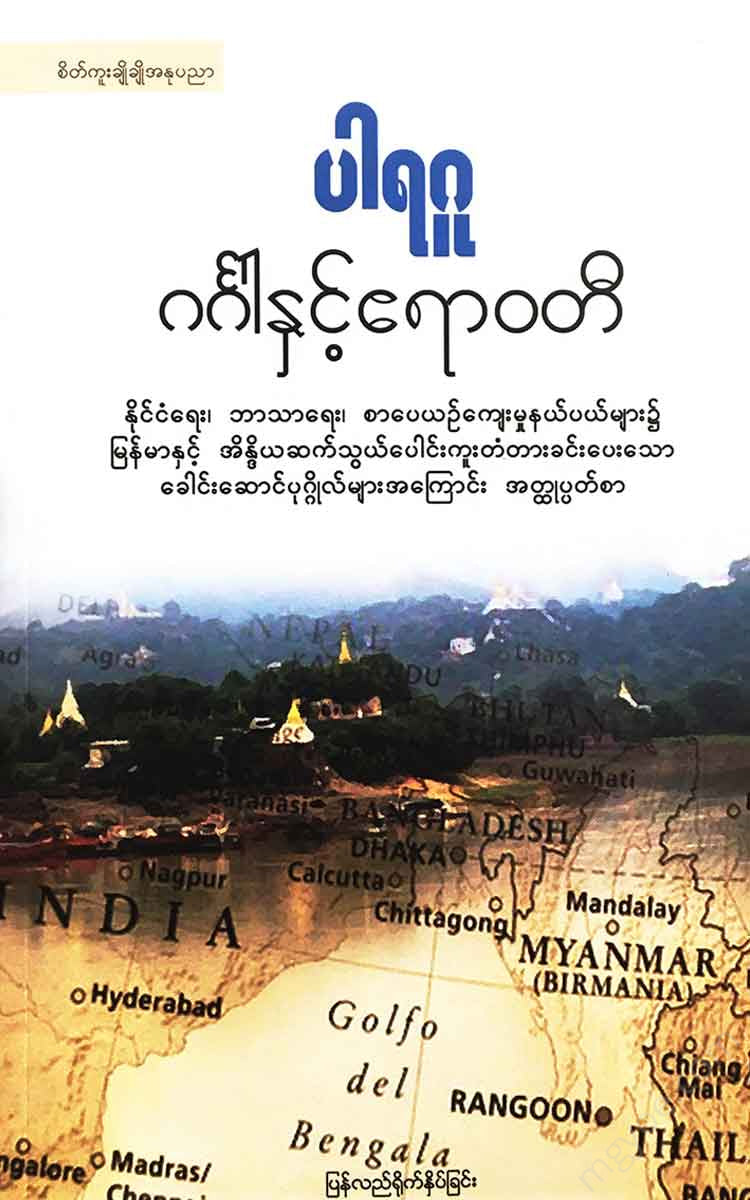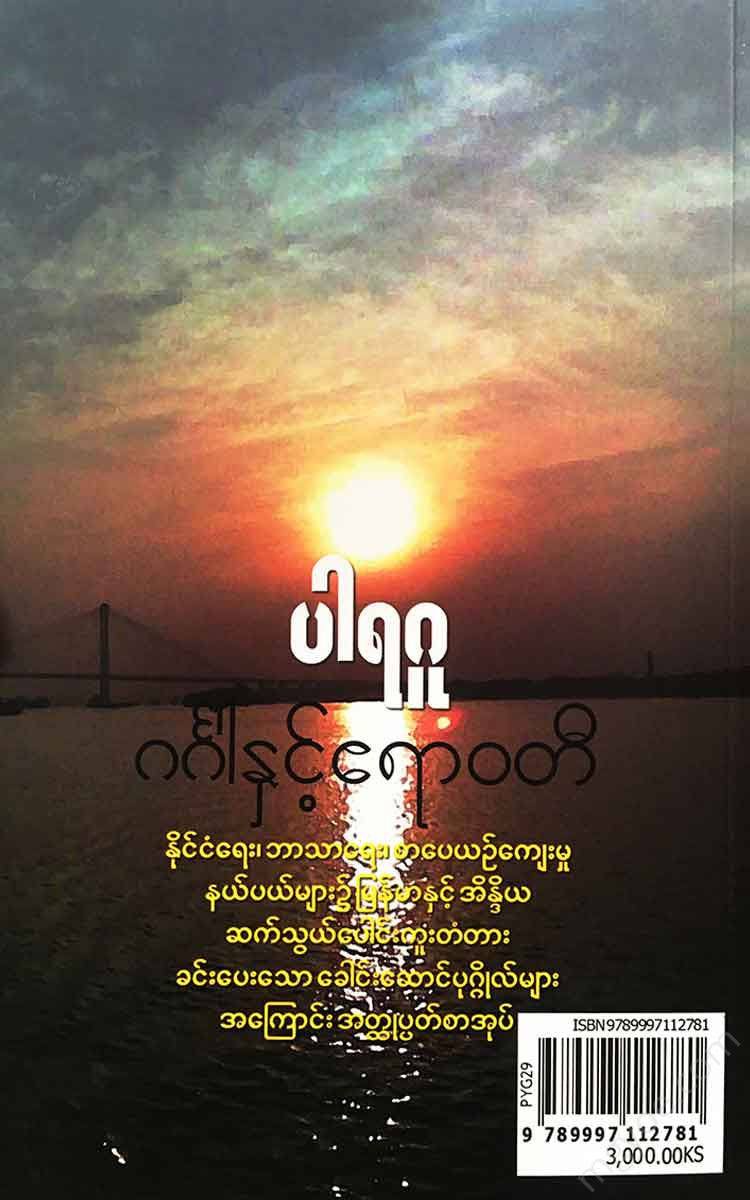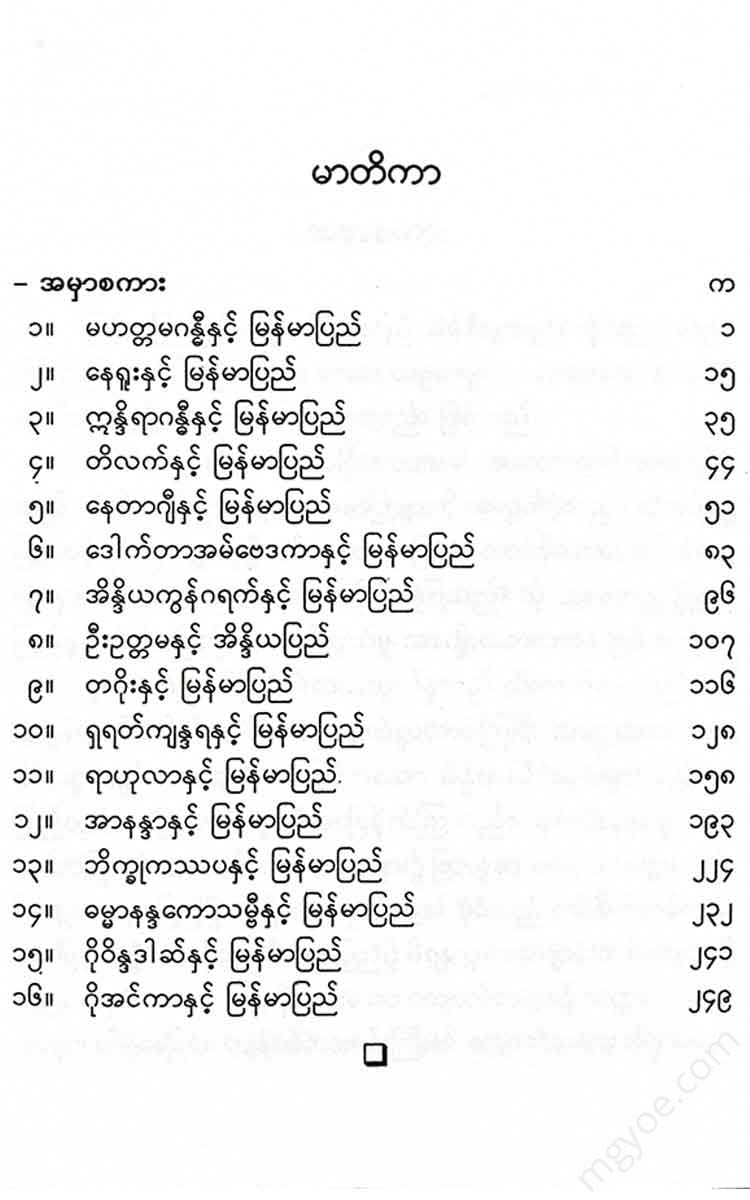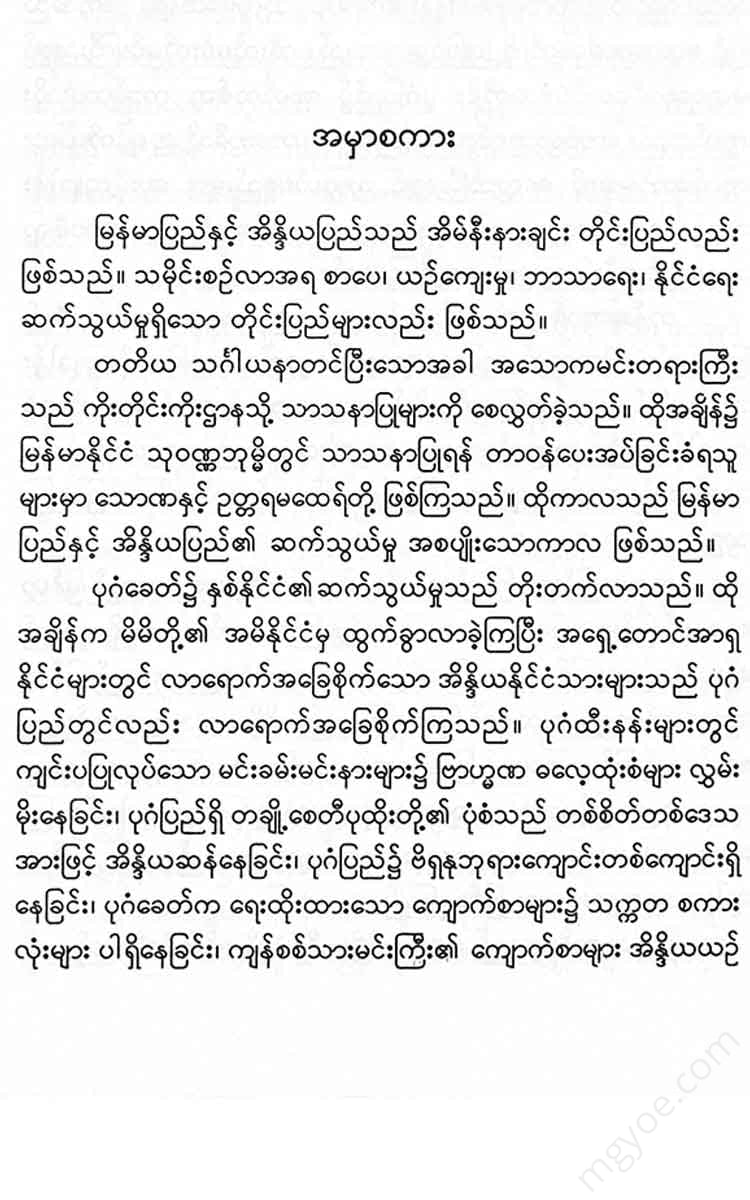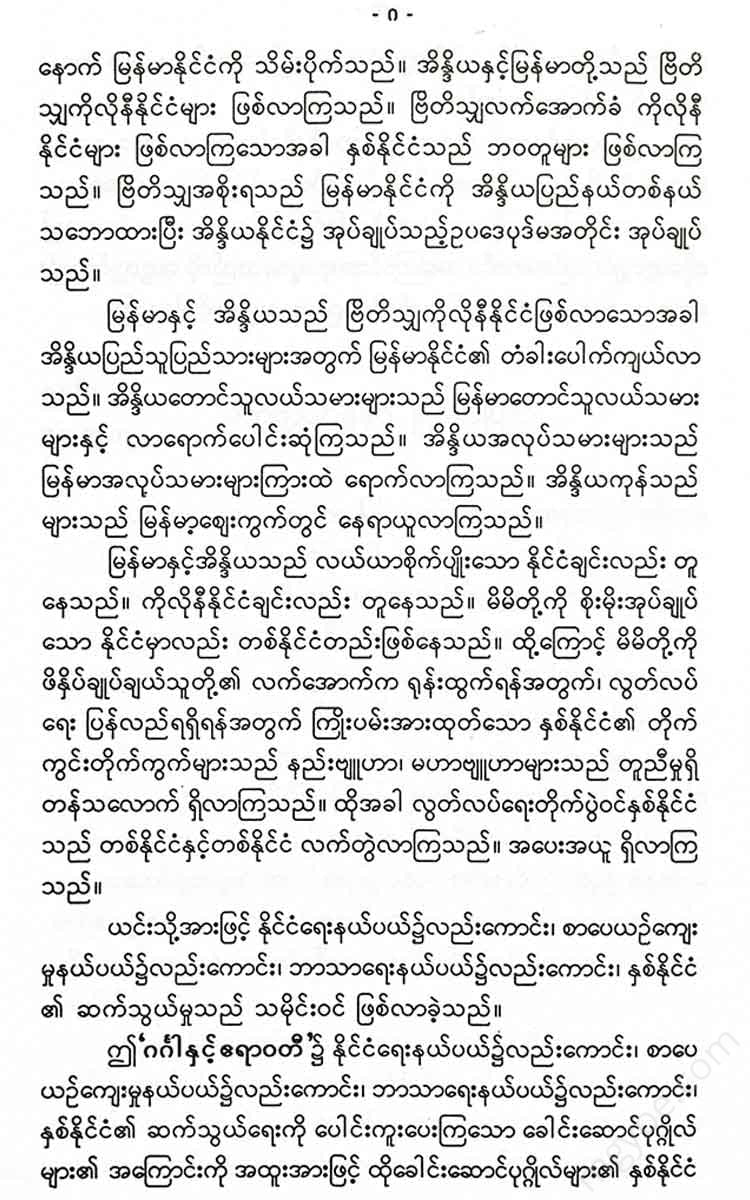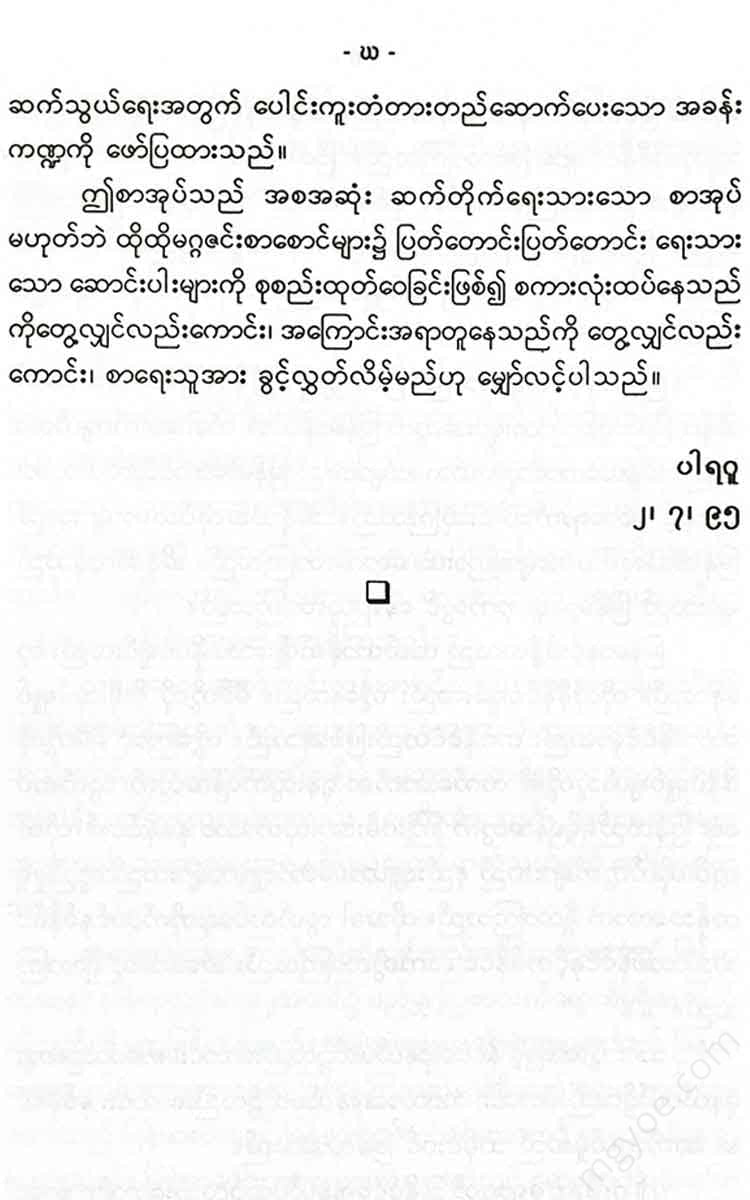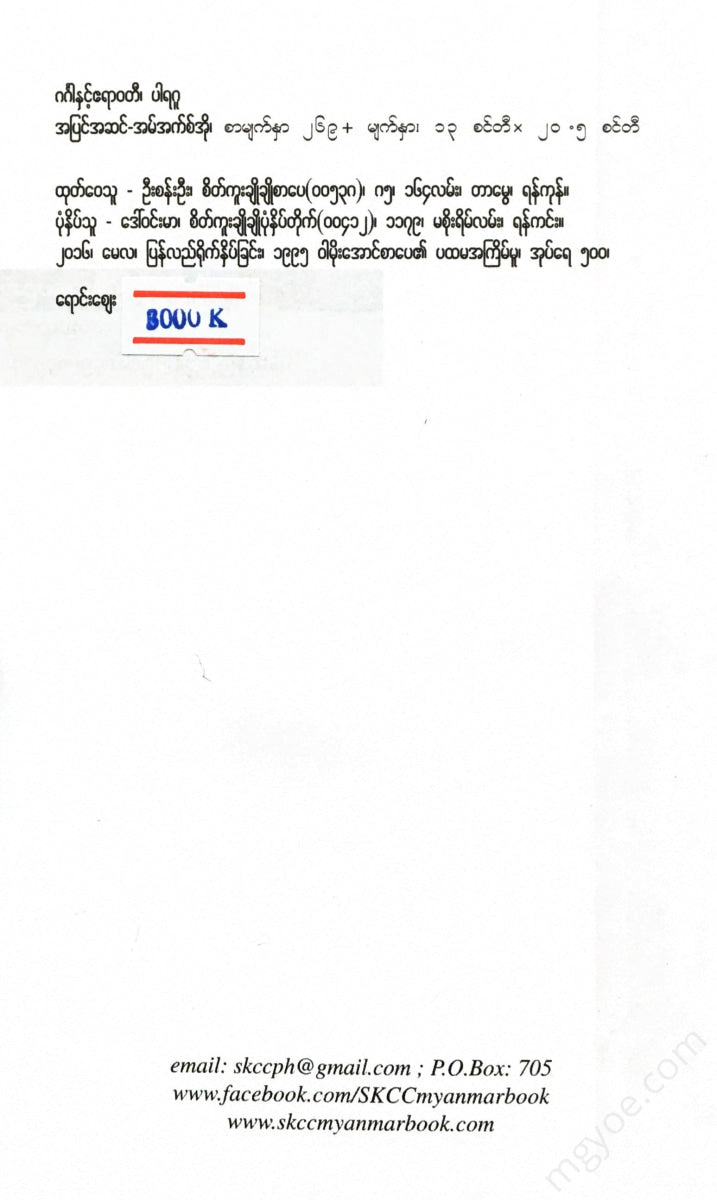စိတ်ကူးချိုချိုစာပေ
Paragu - Ganges and Ayeyarwady
Paragu - Ganges and Ayeyarwady
Couldn't load pickup availability
Mahatma Gandhi and Burma
The fresh sunlight was shining brightly on the Yangon River. Today, unlike usual, the pier was bustling with people. Even before 6 am, people were arriving at the pier on Brookings Road (Bo Ka Lay Market Street), and the sun was rising, and the crowds were increasing. The crowd gathered near the health hospital was mostly Indian, while the Burmese were scattered. Inside the pier, there were many Burmese men, women and monks. The crowd had gathered to welcome a big person who was arriving on a large ship that was about to dock at Yangon port at around 6 am.
The ocean liner SS Arunda, slowly navigating the Yangon River, arrived at Yangon Port in about 6:30 a.m. The ocean liner, which left Calcutta on March 5, 1929, arrived in Yangon three days later on March 8.
While the ocean liner was still in the middle of the Yangon River, a small boat from the port sailed towards the ocean liner. On board the boat were the Chairman of the Yangon Municipal Corporation, Mr. Rafi, Dr. P. J. Mehta, Dr. Duge, and Indian nationals, as well as political leaders such as U Chit Hlaing and U Pathun, a total of 12 prominent people from the city. These people were the people who had run ahead of the person on the ocean liner before the ship reached the shore. When the people who had run ahead of the person boarded the ocean liner, they met the person that the whole people had been waiting for. That person was Mahatma Gandhi, the father of the Indian people, who had already become famous not only in India but also in the whole world.
The ocean liner was slowly approaching the port. As soon as it reached the port , a loud shout of "Mahatma Gandhi Ki" almost burst out and echoed around the area. The reporters and some people on the port could not wait for Mahatma Gandhi to get off the ship and hurriedly boarded the ship to see Mahatma Gandhi. However, they could only see U Chit Hlaing and his group on the ship, but not Mahatma Gandhi. Where would they see him? They were looking for Mahatma Gandhi in the first and second compartments. They did not know anything about Mahatma Gandhi. Once, when a man asked Mahatma Gandhi on a train, "Why do you have to ride in the third class?" Gandhi replied, "Because there is no fourth class."
Now Mahatma Gandhi was coming from the third deck. Amidst the loud shouts of Mahatma Gandhi, the market was open, Gandhi came down from the ship. He was flanked by Mr. Rafi on his right and U Chit Hlaing and U Pathun on his left. Gandhi was wearing only a dhoti. His face was smiling. Police, journalists, and photographers surrounded Gandhi. The London Art Film Company filmed the scene.
When Gandhi arrived at the reception area at the pier, he was garlanded. Then he was taken by car to the house of Dr. P.J. Mehta in the pagoda complex on the Diamond Road. Dr. P.J. Mehta was an old friend of Gandhi. On both sides of the road where Gandhi's car passed, an unprecedented and unusual crowd of Indians was packed. There were also a large crowd of Burmese monks. All along the road where Gandhi's car passed, shouts of ' Mahatma Gandhi ki ' were heard. Some Indians climbed brick walls to watch, others climbed lampposts and coconut trees to watch. An Indian climbed a coconut tree. As Gandhi's car passed, he crossed his legs and clapped his hands. At that moment, he could not control his legs.
It slid down. The poet had his hands on the palm tree, which was not a good luck charm. Otherwise, he might have fallen off the palm tree. Until he reached the house where he was staying, the cries of "Gandhi Ki" continued so much that the host had to apologize. At that time, Gandhi and his wife were also there. However, Gandhi's wife did not go through the crowd with Gandhi, but took a car and went to the house where he was staying.
On the same day, a reception was held in honor of Mahatma Gandhi at the Fitzroy Park (Bandula Park) by the Yangon Municipality. At the reception, the Chairman of the Municipal Corporation, Mr. Rafi, dressed in the Chairman's robes, read out a eulogy to Mahatma Gandhi. After reading the eulogy, Sayadaw U Naginda shouted, "May Mahatma Gandhi live long, prosper, and prosper in all his endeavors," and the entire audience cheered. This was the first time in the history of the Yangon Municipal Corporation that such an honor was given to a civilian who was not a government official. The eulogy delivered by the Chairman of the Municipal Corporation proudly spoke of the rapid development and transformation of Yangon in the past 15 years. In response to this, Gandhi said in his speech, "Every time I come to Myanmar, I visit I love the Burmese women. My friends, the letter describes the Burmese people as kind-hearted and open-minded. I know that the Burmese people are very kind-hearted. I have walked the streets of Yangon with my friend Dr. Mehta. If I were to go there again, I would not be able to get lost in the wide streets of Yangon. I see how Yangon is changing in a matter of hours as I drive through your magnificent streets. I hope that your urban development will be a true reflection of the progress of the Burmese farmers in the countryside. I must admit that the progress of the big cities in India is not at all the real progress of the farmers in India,” he said.
The monks also held a reception for Mahatma Gandhi at Shwedagon Pagoda. The ceremony was attended not only by monks but also by many individuals. The monks and individuals were eager to learn new ways from Gandhi in their struggle for freedom from colonial rule. Moreover, the monks saw Gandhi as a great admirer of Buddha and a follower of the Buddhist Dharma. They also believed that there was much to be gained by working together with him for the same goal. The hundreds who gathered at Shwedagon Pagoda
On behalf of thousands of monks and individuals, U Pathun paid tribute to Gandhi, saying that his noble example paved the way for the independence of India and Burma.
At that ceremony, Mahatma Gandhi addressed the monks, saying, “I am glad to hear that the monks are leading the political movement in Burma. But when it comes to leading the political struggle, a heavy responsibility rests on the shoulders of the monks. I would like to appeal to the monks that they should not only be pure and chaste, but also combine pure and chaste purity with great wisdom. You are now sitting under the shadow of the Buddha. May the Buddha, who is giving you his shadow, guide you in all your movements for freedom.”
At 6 pm on the 8th, a reception was held for Mahatma Gandhi in the Bhakra Monastery. The entire front of the monastery was filled with monks, monks and a large number of Burmese and Indian people. A stage was built on the south side of the nine-story pagoda. At 7 o'clock, Mahatma Gandhi arrived with Dr. P. Mehta. When Gandhi arrived on the stage, Maung Maung Su, the secretary of the Myanmar Federation, welcomed Gandhi with a garland. The monks present on the stage with Gandhi were U Wimalabuddhi (Ginda Oowaada Baungsag 1929), U Naga, and the people were U Ba Si, U Myint, Rambree U Maung Maung, and Maung Maung Su.
The Secretary of the Central Buddhist Association of Myanmar (GCBA), Maung Maung Su, said that Mahatma Gandhi's visit to Myanmar was to invigorate the struggle for independence without bloodshed. Since 1921, Burma has been following the system developed by Mahatma Gandhi. When the Diakite administration was given, the legislature was boycotted. The strike was called GCBA because of the boycott. The farmers were facing great hardships due to the high taxes they had to pay under the Diakite administration. A meeting was held in Taungoo on March 22 to boycott British goods and wear traditional clothes.
